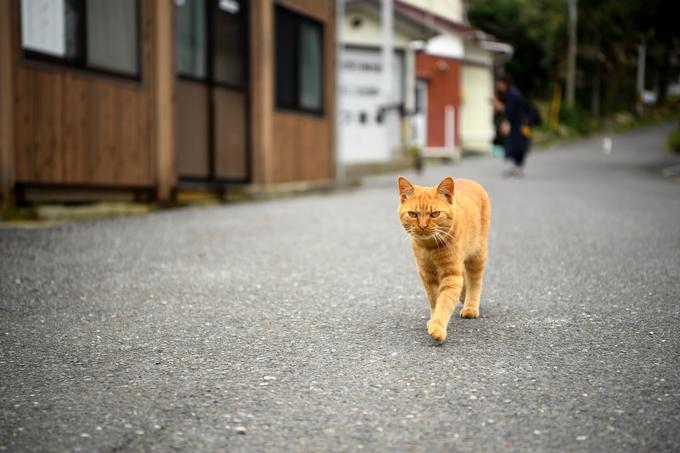Islands around the world tend to have fluctuating populations, generally either decreasing or increasing in size due a slew of contributing factors. One of the Japanese islands, lying off the coast of the city of Ishinomaki, is Tashirojima. Although this island has been diminishing in population, it has not lost its beauty and is today also known as "Cat Island," and for good reason, too: It is home to numerous cats.
-
What are the main industries on Tashirojima?
- The main industries on the island of Tashirojima are fishing and tourism, but for hundreds of years, the island was also known for its silk production.
-
What role did silk production play in Tashirojima's history?
- During the 18th century, the locals on the island raised silkworms, making some of the finest silk off the coast of Japan.
-
How did cats become an important part of Tashirojima?
- In order to keep their silkworms and silk safe, the locals thought that cats would be a good solution to keep the local mouse population from ruining their silk.
-
How do cats compare to the human population on Tashirojima?
- Now, cats outnumber the human population by six to one.
-
How has tourism influenced Tashirojima?
- Today, tourism has become a huge part of the island’s economy, as tourists from around the world come here to catch a glimpse of all the amazing feline communities.
-
What was the role of cats during the 2011 Tohoku earthquake and tsunami?
- After the devastating Tohoku earthquake and resulting tsunami in 2011, the islanders believe that the feline community helped to warn them, thus saving the island from further destruction.
-
How do locals view the cats on Tashirojima today?
- Today, the locals think of the cats as their good luck charms.
-
What is the current state of Tashirojima?
- Despite the depleting number of humans, this island is still full of life and culture.
-
How has the human population on Tashirojima changed over time?
- Over the past 50 years, the human population decreased significantly from 1,000 to 100 inhabitants, with an average age between 60 to 70 years old, meaning that future human habitation of the island is looking increasingly unlikely.
-
How does the cat population compare to the human population on Tashirojima?
- In a world dominated by humans, Tashirojima is an exception as the island has slowly been taken over by felines.
-
How do the people of Tashirojima view their cats?
- The remaining humans stick by their feline companions and are very superstitious about their cats. There are many legends and myths surrounding them.
-
Why do local fishermen feed the cats?
- Local fishermen believe that by feeding the cats every day they have a good chance to catch more fish.
-
How do locals use cats to predict fishing conditions?
- They believe that by monitoring the cats’ movements and actions, they can predict the weather and fish movement patterns.
-
What is the Nekokamisama cat shrine?
- Between the two villages of the island lies the Nekokamisama cat shrine, which was originally built due to the accidental death of a cat that was hit by a falling rock.
-
Why was the Nekokamisama cat shrine built?
- A local fisherman, who felt responsible for the cat’s death, decided that a shrine should be built to honor the fallen cat and save the island from evil spirits.
-
How many cat shrines and memorials exist on Tashirojima?
- There are at least 10 shrines devoted to sacred cats that have died on the island as well as over 50 dedicated stones in the shape of a cat.
-
How can visitors reach Tashirojima?
- The island of Tashirojima is only accessible by boat or ferry and is located 15 km from the city of Ishinomaki on a 40-minute ferry ride.
-
Are there accommodations available on Tashirojima?
- Guesthouses have been built on the island, offering overnight stays.
-
Where do ferries arrive on Tashirojima?
- The ferry can either take visitors to Odomari Port on the northern part of the island or to Nitoda Port located on the southern part.
Best Time to Visit
Places to Stay
Tips for Visiting
Spring (March-May) – Mild weather and cherry blossoms, perfect for exploring the island and meeting the cats.
Guesthouses in Ishinomaki – Since there are no hotels on the island, staying in Ishinomaki and taking a ferry is recommended.
Visit the Cat Shrines – Pay respects to the island's feline guardians.
Summer (June-August) – Warm and green, ideal for enjoying the coastal scenery and outdoor walks.
Hamaya Inn (Ishinomaki) – A traditional Japanese inn near the ferry port.
Bring snacks and drinks – There are very few shops on the island, so come prepared.
Fall (September-November) – Pleasant temperatures and fewer crowds, great for a peaceful visit.
Kanyou Hotel (Ishinomaki) – A comfortable stay with ocean views.
Interact with the island’s cats – Many friendly felines roam freely, happy to receive attention.
Winter (December-February) – Cold and quiet, offering a unique and tranquil experience.
Hotel Route Inn Ishinomaki – A modern and convenient option for winter travelers.
Check ferry schedules – Winter weather can sometimes cause ferry delays.
Plan Your Trip


